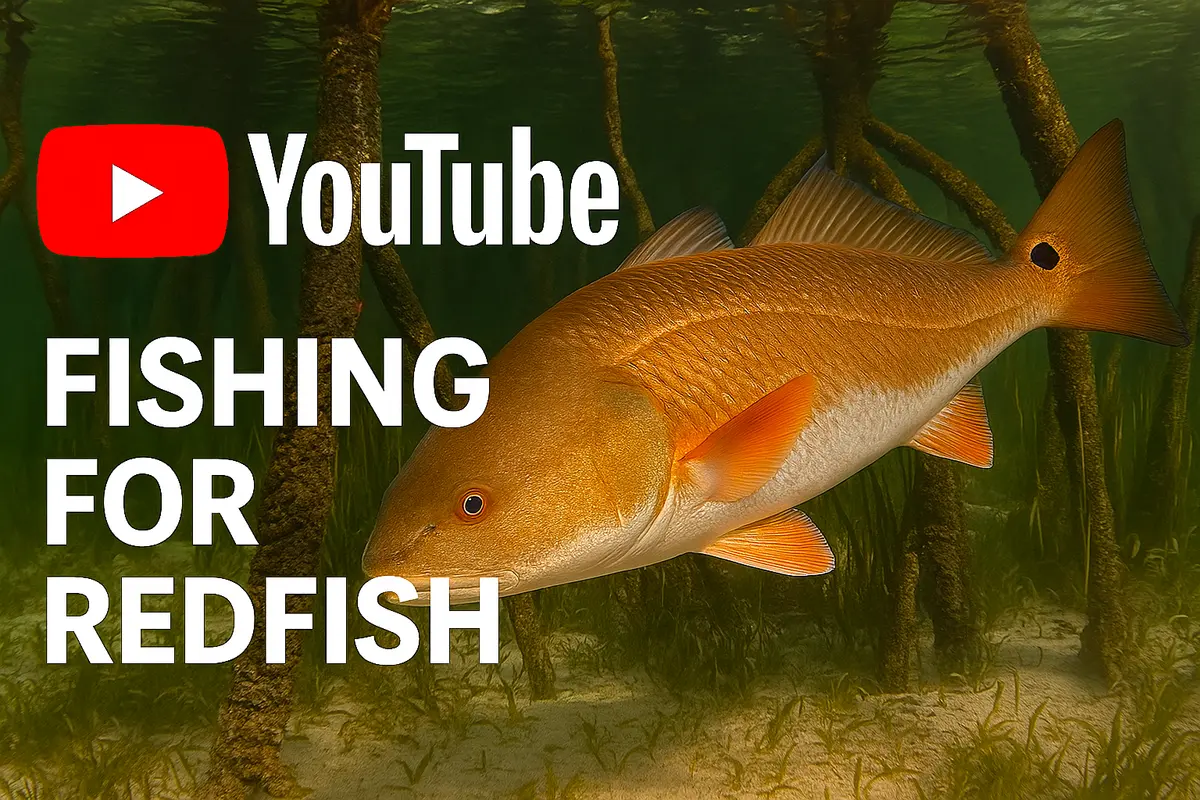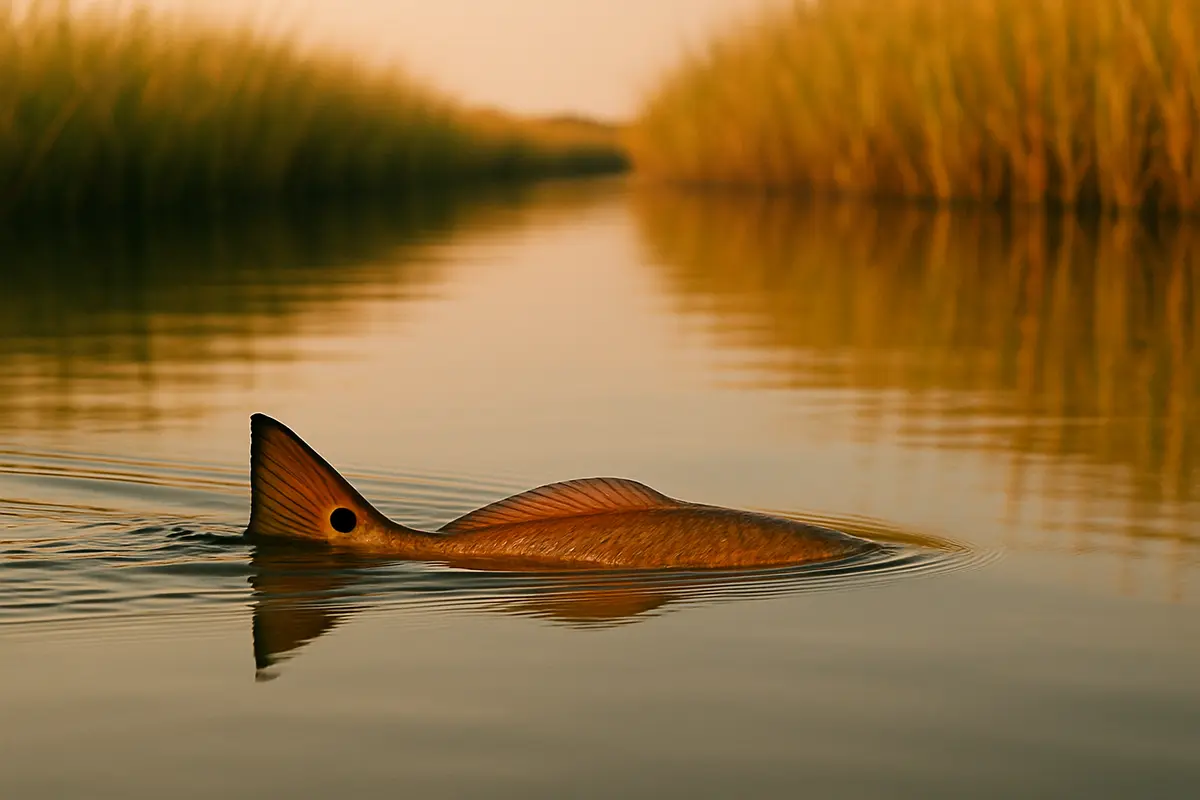Redfish: Habitats- Backwater
Table of Contents
- Redfish: Habitats – Backwater
- The Anatomy of a Backwater and Why They Hold Redfish
- 1. Shell Ridges & Oyster Bars
- 2. Sand Flats & Mudflats
- 3. Cut Channels & Drainage Runs
- 4. Mangrove Thickets & Seagrass Beds
- 5. Deep Potholes & Deep-Water Holes
- Redfish Positioning Relative to Tides
- Environmental Variables That Influence the Bite
- Water Temperature
- Water Clarity
- Seasonal Movements
- Wind & Weather
- 1. Indian River Lagoon Backwaters – Florida
- 2. Galveston Bay Backwaters – Texas
- 3. Chesapeake Bay Backwaters – Maryland/Virginia
- 🧰 Recommended Gear for Backwater Redfish
- Tackle Blueprint for Backwater Redfish
- Four Backwater Bait & Rig Strategies
- Presentation Techniques That Fool Backwater Reds
- Channel Entrance Ambush
- Ridge-Edge Glide
- Pothole Bounce
- Grass-Edge Pop
- Community Wisdom & Expert Tips
- Fine-Tuning by Season
- Spring: Channel Chasers
- Summer: Flat Stalkers
- Fall: Cut-Run Carnage
- Winter: Deep-Hole Discipline
Redfish: Habitats – Backwater
Backwater flats—those protected, shallow basins behind barrier islands, shells and oyster bars—are prime ambush zones for redfish. Calm waters and abundant forage channels create natural highways and staging areas. Mastering backwater topography and flow patterns can transform fickle flats into prolific fishing grounds.
The Anatomy of a Backwater and Why They Hold Redfish
1. Shell Ridges & Oyster Bars
Accumulations of shell and oyster create elevated ridges that trap current-drifted shrimp and crabs. Redfish patrol these linear structures, hammering forage as it cascades off the edges into the basin below.
2. Sand Flats & Mudflats
Gently sloping flats hold buried ghost shrimp, crabs, and small baitfish. During higher tides, reds fan out over flats in 1–2 ft of water, scavenging in every depression and ripple.
3. Cut Channels & Drainage Runs
Narrow cuts carved by tidal exchange funnel water—and bait—into the backwater. Redfish station at pinch points, intercepting prey being flushed in or out with the tide.
4. Mangrove Thickets & Seagrass Beds
Where available, vegetation edges offer cover and ambush lanes. Mangrove prop roots and seagrass beds shelter juvenile baitfish; reds cruise the perimeters waiting for easy meals.
5. Deep Potholes & Deep-Water Holes
Submerged depressions provide refuge during low tides. Reds stage in these “fish farms,” moving out to flats as the tide floods, then retreating when the water level drops.
Redfish Positioning Relative to Tides
| Tide Stage | Likely Redfish Spot | Why They Hold There |
|---|---|---|
| Flood tide | Shell ridges & flats (1–2 ft deep) | Incoming tide pushes forage onto flats; ridges concentrate prey along edges |
| High slack | Deep potholes & mangrove edges | Stable water allows staging before next move; cover provides ambush lanes |
| Ebb tide | Cut channels & drainage runs | Draining water funnels bait; reds intercept prey exiting the backwater |
| Low slack | Deep holes & channel mouths | Reds rest in deeper spots before switching direction with tide reversal |
Reading a Backwater: Look for ghosting tails, slurps near channels, or subtle circular ripples around depressions; these are giveaways of feeding activity in clear backwater basins.
Environmental Variables That Influence the Bite
Water Temperature
Optimal backwater feeding occurs between 70–86 °F. Below 72 °F, reds concentrate in deeper channels; above 84 °F, they shift to shaded mangrove or seagrass edges.
Water Clarity
Backwaters often stain after rains—perfect for aggressive presentations. In crystal-clear basins, lighten leaders (20–25 lb) and slow down retrieves to avoid spooking fish.
Seasonal Movements
- Spring: Reds surge onto flats with rising tides, feeding heavily on shrimp runs.
- Summer: Focus dawn/dusk on deeper flats; schools break out over shallow flats on cooler mornings.
- Fall: Major backwater feeders ahead of winter drawdown; cut-channel ambushes fire.
- Winter: Fish deep holes and channel mouths with slow, bottom-bouncing offerings.
Wind & Weather
A gentle onshore breeze pushes bait into flats; reds follow along wind lines. Overcast skies can prompt reds to venture farther onto flats midday.
1. Indian River Lagoon Backwaters – Florida
- Location: Northern Indian River Lagoon back channels and shellbanks
- Habitat: Shallow shell flats, cut channels, mangrove fringes, and deeper basins
- Best Season: Spring (March–May) and Fall (September–November)
- Techniques:
- Sight-casting soft plastics tipped with shrimp along shell ridges on flood tide
- Free-lining live fiddler crabs through cut channels during ebb
- Push-pole stealth to target tailing fish in 1–2 ft over mudflats
- Notable Features:
- Extensive mangrove corridors offering protected staging areas
- Clear water allows spotting fish in deep potholes up to 5 ft
2. Galveston Bay Backwaters – Texas
- Location: West Bay backwater basins behind Bolivar Peninsula
- Habitat: Mudflats, oyster bars, drainage runs, and seagrass edges
- Best Season: Late Summer through Fall (July–October)
- Techniques:
- Using popping corks with shrimp trailers along oyster bars on rising tides
- Skipping weedless plastics under docks and overhangs at high slack
- Drifting cut mullet past flat edges on ebb tide to trigger ambush strikes
- Notable Features:
- Wide flats generating strong, channelized flows
- Frequent schooling activity on shallow flats before dawn
3. Chesapeake Bay Backwaters – Maryland/Virginia
- Location: Tangier Sound shallow basins and island backwaters
- Habitat: Sand flats, eelgrass beds, tidal runs, and deep holes
- Best Season: Summer through Early Fall (June–September)
- Techniques:
- Fly-casting beadhead shrimp patterns into channel mouths on ebb
- Sight-fishing with white paddle-tail plastics along flats at high sun
- Soft-plastic worm rigs bounced along pothole edges before flood
- Notable Features:
- Cooler summer temperatures concentrate reds in backwater basins
- Excellent access via small skiffs and shallow-draft boats
🧰 Recommended Gear for Backwater Redfish
- Rod & Reel: 7′ medium-power spinning rod with 3000-size reel
- Line Setup: 15–20 lb braid with 20–30 lb fluorocarbon leader
- Lures & Baits: weedless shrimp/crab-imitating plastics, live fiddler crabs, cut mullet
- Terminal Tackle: EWG or worm-style hooks (2/0–4/0), popping corks, ¼–½ oz jigheads
Tackle Blueprint for Backwater Redfish
| Component | Specification | Purpose |
|---|---|---|
| Rod | 7′ medium-power spinning rod | Versatile for casting flats and targeting potholes |
| Reel | 3000-size saltwater with smooth drag | Handles long runs and rocky ambush zones |
| Leader | 20–30 lb fluorocarbon | Stealth and abrasion resistance on structure |
| Hooks | 2/0–4/0 EWG or worm hooks | Weedless presentations in grass and cover |
| Weights | ¼–½ oz jigheads or popping corks | Match shallow currents and cover presentations |
Four Backwater Bait & Rig Strategies
| Bait Type | Rig | Why It Works |
|---|---|---|
| Weedless Plastics | Jighead under popping cork | Skip across flats and over potholes with minimal snagging |
| Live Crabs | Free-line on 3–4 ft fluoro leader | Natural movement through channels and mangrove edges |
| Cut Mullet | Split-shot 6 in above hook | Strong scent trail in draining water runs |
| Fly Patterns | Beadhead shrimp or crab flies | Accurate sight presentations in clear backwater basins |
Presentation Techniques That Fool Backwater Reds
Channel Entrance Ambush
Cast into drainage runs at ebb; hold rod tip high and let bait drift naturally through converging flows.
Ridge-Edge Glide
Cast beyond shell ridges on flood; slow retrieve with occasional twitches to imitate crustacean tumbles.
Pothole Bounce
Lower plastics just past pothole edge; let weight tap bottom and pause to mimic hiding prey.
Grass-Edge Pop
Use popping corks along seagrass margins at slack; soft pops draw reds from cover.
Community Wisdom & Expert Tips
- Early flood focus: backwater bite peaks first 45 minutes of incoming water
- Wind aids presentation: slight onshore breeze pushes bait into flats
- Stealth wins: push-pole or drifting beats noisy motors
- Color matters: in clear water use natural hues; in stained water brighter profiles excel
Fine-Tuning by Season
Spring: Channel Chasers
Target narrow drainage runs on first flood; heavy shrimp runs lure reds into ambush lanes.
Summer: Flat Stalkers
Early morning sight-fishing on flats; schools often break out before sun peaks.
Fall: Cut-Run Carnage
Focus cut-bait drifts on ebb; reds stage in channels waiting for stranded forage.
Winter: Deep-Hole Discipline
Seek deep backwater basins; slow-present shrimp and plastics just off bottom.
Click to learn in-depth backwater flats redfish strategies.
| Popular YouTube Searches | Watch |
|---|---|
| Backwater flats redfish tips |  |
| Sight fishing backwater channels |  |
| Best baits for backwater redfish |  |
| Schooling redfish on flats |  |
Ask AI for More Info
Try our AI assistant for free—sign up to access this powerful feature.
👉 Sign Up to Ask AI